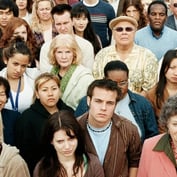What is on the site? It is imperative that you are fully aware of what your online audience needs. Special considerations and accommodations are required when designing Web sites for maximum senior usability. The National Institute on Aging and the National Library of Medicine collaborated on some basics for “Making Your Web Site Senior Friendly.” Here are some of the tips on their checklist, as well as additional design best-practices:
- Use an easy-to-read, sans serif font – such as Arial or Verdana – in medium or bold. Offer a printer-friendly version of the page.
- Don’t use serif, novelty, condensed or all-cap fonts.
- Keep page copy brief.
- Don’t make readers scroll. The ability to scroll a Web page is not only a learned behavior, but one that requires a level of dexterity and coordination your visitor may not have. If you can’t avoid scrolling, consider creating your own, larger scroll buttons on those pages.
- Provide an obvious way for visitors to increase text size with a simple click of their preference.
- Don’t go smaller than 12-point text.
- Use dark type against a light, plain background. View your site through a yellow filter to simulate certain age-related vision problems and make sure it maintains its clarity, contrast and legibility.
- Don’t use yellow, blue or green close to each other – and avoid reverse type and patterned backgrounds. They make your content harder to read.
- Make links obvious and consistent. Image-based links should be large and easy to click. Let visitors know what’s clickable – and where they will go or what will happen when they click.
- Don’t use Web lingo – such as “back,” “URL,” “toolbar,” “IM,” and “minimize” – or icons without a clear explanation. And don’t use drop-down or tree menus. They’re confusing. According to Fidelity and AARP studies, most seniors are not familiar with commonly used Web terms.
- Keep your site simple and stable. The rest of the Internet may need to change all the time to maintain its appeal, but sites for seniors should remain familiar and change gradually.
What do they need to do? Once a senior is on your site, you want them to take action. They need to call your toll-free number, request more information, or conduct sufficient research to get them to make an in-person purchase. By nature, seniors are much more cautious in their Web travels and good Web usability is key.
- A visitor should never be more than three clicks away from the information they need.
- Have your contact information – especially phone numbers – and calls-to-action on every page. Make them easy to read and in a consistent location.
- Link redundancy is good. Have both text links and bulleted links to increase the likelihood that older users will successfully get where they want to go.
How do you keep them coming back? The Internet, with its infinite flexibility, offers smart, comparatively quick-to-implement, cost-effective ways to make sure you never fall out of sight or out of the minds of your prospects. For example, e-newsletters and blogging are quick and cost-effective tools to engage your audience. According to Jakob Nielsen’s Nielsen Norman Group, e-newsletters, “create a much larger, positive emotional bond between the user and company than a Web site can.” Another way to keep them coming back is through blogging. Yes, seniors blog. Blogging keeps them informed of current events, helps them make new friends, and gives them a voice for their thoughts and opinions.
The bottom line when it comes to Web marketing to seniors is that seniors are online and their range of online activities, expectations and sheer numbers are only growing. Internet marketing is an invaluable lead generator and retention tool. But remember that seniors experience the Web differently and require thoughtful design accommodations. Seniors place high priority on being able to easily find courteous, friendly sales staff when they shop in a store – and going online is no different. Your older customers need contact with you. Make sure you drive their inquiries to your phone number – and a live person at the other end! Use the Internet to get them in your door, and then build a personal relationship with them.
David Martino is president of Martino & Binzer, a full service communications firm that specializes in creating marketing campaigns for the senior industry. For more information visit mature.goodbait.com, call 860-678-4300, or email [email protected].








 August 07, 2008 at 08:00 PM
August 07, 2008 at 08:00 PM









